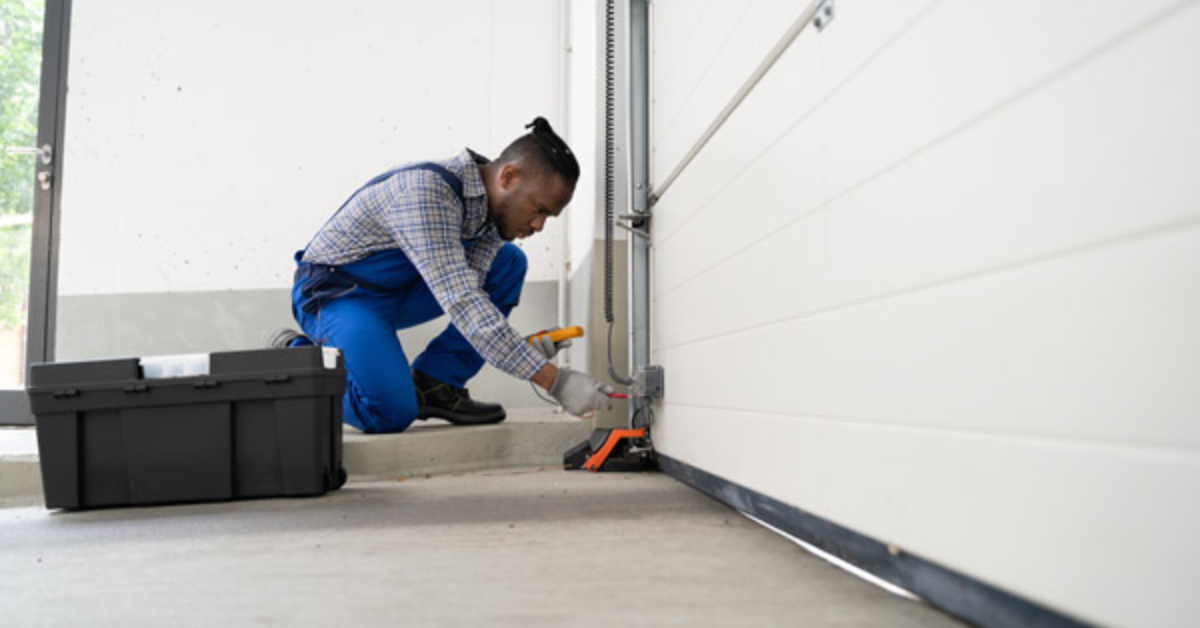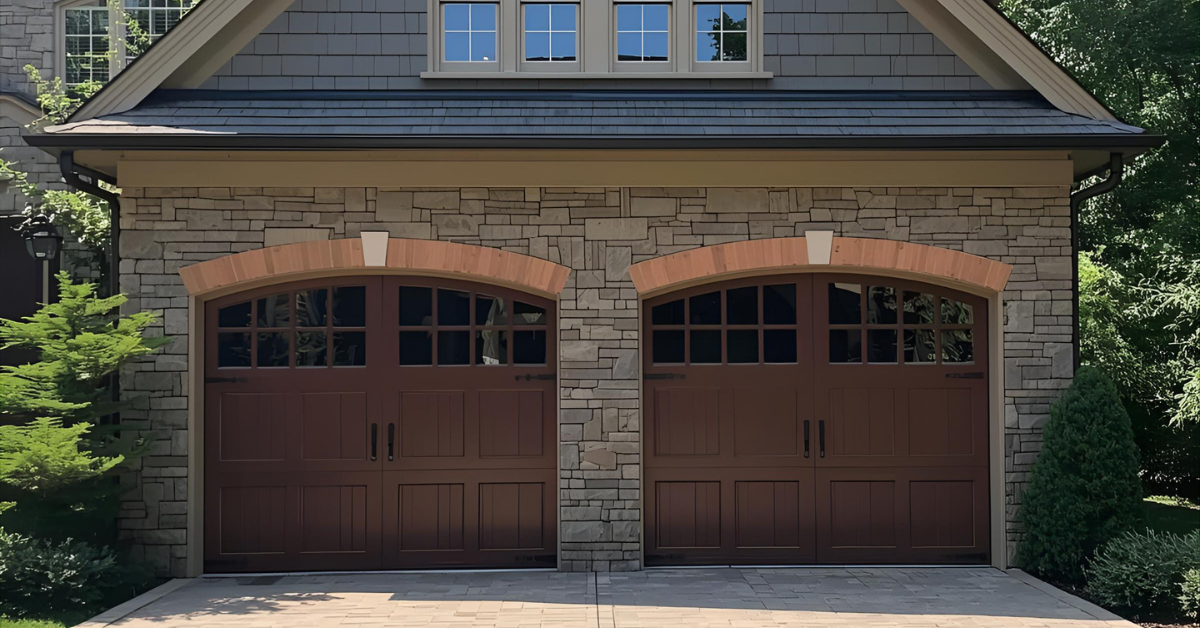How to Align Garage Door Sensors for Smooth Operation
Garage door sensors are fundamental components of modern garage door systems, designed to ensure safety and smooth operation. Consisting of two units placed on either side of the door near the floor, these sensors work in tandem to detect obstacles or obstructions in the door's path.
Typically using infrared technology,
these sensors transmit an invisible beam of light across the door's opening. When functioning correctly, this beam remains unbroken. However, if something interrupts this beam while the door is in motion, the sensors trigger an automatic reversal of the door's movement to prevent accidents or damage.
Importance of Proper Alignment
The proper alignment of garage door sensors is crucial for the efficient and safe operation of the garage door system. When these sensors are misaligned, even by a small margin, it can disrupt the beam of light they transmit. This misalignment often leads to malfunctions such as the door closing partially and then reopening, refusing to close, or not responding to commands at all.
Moreover,
misaligned sensors compromise the safety features of the garage door. In such instances, the door may not detect obstacles, potentially resulting in accidents, property damage, or injury to people or pets in the door's path. Addressing and maintaining the alignment of these sensors is vital for ensuring the continued reliability and safety of the garage door system. Regular checks and adjustments help prevent operational issues and maintain the overall functionality of the door, offering peace of mind to homeowners.
Identifying Sensor Alignment Issues
Partial Closing and Reversal: One of the primary indications of sensor misalignment is when the garage door starts closing but abruptly reverses without apparent cause, often just as it's about to touch the ground.
Door Refusing to Close:
Misaligned sensors might prevent the door from closing altogether. Despite no visible obstruction, the door may halt its descent or refuse to respond to the command to close.
Inconsistent Functioning: Sometimes, the door may operate erratically. It might close smoothly on one occasion but struggle or refuse to close properly on another, indicating a potential sensor misalignment issue.
Faulty Sensor Indicator Lights:
Many garage door systems have indicator lights on the sensors. If these lights are not lit up or are blinking inconsistently, it could signal a problem with the sensor alignment.
Visible Sensor Displacement:
Physically inspecting the sensors might reveal misalignment. They should be parallel to each other and positioned at the same height above the ground. Any visible deviation from this alignment suggests an issue.
Common Causes of Sensor Misalignment
- Any physical object, even something as small as dust, debris, or cobwebs, can obstruct the sensor's line of sight. This obstruction disrupts the beam and causes misalignment issues.
- Sensors can be inadvertently bumped or nudged out of alignment during cleaning, maintenance, or other activities around the garage, leading to misalignment problems.
- Improper installation or loose mounting brackets can cause the sensors to shift from their correct positions over time, resulting in misalignment.
- Extreme weather conditions, such as heavy rain, snow, or temperature fluctuations, might affect the alignment of garage door sensors, causing them to shift or become misaligned.
- Faulty or damaged wiring connections between the sensors and the garage door opener can disrupt the signal transmission, leading to misalignment issues.
Understanding these signs and causes of sensor misalignment helps in promptly identifying and addressing alignment issues, ensuring the smooth functioning and safety of the garage door system.
Preparing for Alignment
Before starting the alignment process, ensure safety measures are in place to prevent accidents or injuries. Here are some essential safety precautions:
Safety Precautions
- Begin by disconnecting the power to the garage door opener. This step helps avoid accidental activation of the door during alignment, reducing the risk of injury.
- Remove any objects, debris, or obstructions around the sensors and the garage door's path. Ensure a clear workspace to facilitate unhindered movement during the alignment process.
- Wear appropriate safety gear, such as gloves and safety glasses, to safeguard against any potential mishaps or sharp edges while working on the sensors.
Tools Needed
As for the tools required, gathering the necessary equipment beforehand streamlines the alignment process and ensures you have everything on hand. The essential tools for sensor alignment include:
- A set of screwdrivers, including both flathead and Phillips head varieties, will aid in adjusting the mounting brackets and securing the sensors.
- Have a soft cloth or a gentle cleaning solution available to clean the sensors and remove any dust or debris obstructing the sensor's line of sight.
- A leveling tool, such as a bubble level, helps ensure the sensors are aligned correctly both horizontally and vertically.
- Having a tape measure handy allows for precise measurements and alignment of the sensors at the correct distance from the ground and each other.
- Depending on the height of your garage door and sensors, a ladder or step stool might be necessary to reach and adjust the sensors comfortably.
By prioritizing safety precautions and gathering the essential tools beforehand, you can approach the sensor alignment process efficiently and with a reduced risk of accidents or errors. These steps create a conducive environment for successful sensor alignment, ensuring optimal functionality of the garage door system.
Step-by-Step Alignment Process
Start by visually inspecting the sensors' positions. Ensure they are facing each other directly and are parallel to the ground. Check for any visible signs of misalignment, such as one sensor being higher or lower than the other or facing at a slight angle. Also, examine for any physical obstructions obstructing the sensor's line of sight. Next, use a level to verify the alignment horizontally and vertically. Place the level on top of each sensor to confirm that they are both at the same height and level with each other. This step ensures accurate alignment before making adjustments.
Adjusting Sensor Positioning
If misalignment is detected during the assessment, begin by loosening the mounting brackets that hold the sensors in place. Gently adjust the sensors, either vertically or horizontally, to align them properly. Use a tape measure to ensure both sensors are the same distance from the ground and are positioned at the recommended height. Take your time to make small and precise adjustments, ensuring that the sensors remain parallel to each other and maintain the correct alignment. Once adjusted, tighten the mounting brackets securely to hold the sensors in place.
Verifying Alignment
After making adjustments, recheck the alignment using the same methods as during the initial assessment. Use the level to confirm that both sensors are still aligned both horizontally and vertically. Also, visually inspect to ensure they are facing each other directly without any obstructions in their line of sight.
Once you are satisfied with the alignment, restore power to the garage door opener and test the door's operation. Activate the door to close and observe its movement. If the sensors are correctly aligned, the door should close smoothly without any interruptions or sudden reversals.
Repeating the verification step is crucial to guarantee that the adjustments made have resulted in the proper alignment of the sensors. This meticulous step-by-step process of assessing, adjusting, and verifying the alignment of garage door sensors ensures optimal functionality and smooth operation of the garage door system.
Troubleshooting and Fine-Tuning
If the sensors continue to exhibit misalignment issues despite repeated adjustments, consider the following steps:
Double-Check Alignment: Reassess the alignment of the sensors, ensuring they are perfectly parallel to each other and at the recommended height. Even a slight deviation can cause alignment problems.
Inspect for Obstructions: Examine the sensor area thoroughly for any obstructions that might be disrupting the sensor beam. Clean the sensor lenses and the surrounding area to ensure an unobstructed line of sight.
Check Wiring Connections: Inspect the wiring connections between the sensors and the garage door opener. Loose or damaged wiring can lead to signal disruptions and misalignment problems.
Weather Considerations: Extreme weather conditions, such as heavy rain or temperature fluctuations, can affect sensor alignment. Shield the sensors from direct exposure to harsh elements if possible.
Seek Professional Assistance:
If alignment issues persist despite your efforts, it might be time to
consult a professional technician. They have the expertise and tools to diagnose and resolve complex alignment problems.
Fine-Tuning for Optimal Performance
Once alignment issues are resolved, fine-tuning the sensors can further enhance their performance:
- Implement a routine maintenance schedule for the sensors. Periodically check for dust, debris, or any changes in alignment that might affect their performance.
- Most garage door openers allow you to adjust the sensitivity of the sensors. Fine-tune these settings to ensure the sensors detect obstacles accurately without being overly sensitive or too insensitive.
- After fine-tuning, test the garage door's operation multiple times to ensure consistent and smooth functionality. Monitor the sensors for any signs of misalignment or irregular behavior.
- Keep a record of maintenance and adjustments made to the sensors. This documentation helps track changes and serves as a reference for future troubleshooting.
- Inform household members about the importance of sensor alignment and safe practices around the garage door. Educating users can prevent accidental misalignments and ensure the system's longevity.
Taking these troubleshooting steps and fine-tuning measures into account enables a more comprehensive approach to maintaining and optimizing the performance of garage door sensors for long-term reliable operation.
Maintenance and Regular Checks
Regular maintenance and scheduled checks for sensor alignment are essential practices to uphold the functionality and safety of garage door systems. Regular maintenance ensures the smooth and efficient operation of garage door sensors. It helps prevent issues related to misalignment, obstructions, or wear and tear that can affect sensor performance. Well-maintained sensors contribute significantly to the safety of the garage door system. Ensuring their proper function reduces the risk of accidents, especially involving the door closing on objects or people in its path.
Routine maintenance prolongs the lifespan of garage door sensors and associated components. Addressing minor issues early prevents them from escalating into more significant problems that could require costly repairs or replacements. Consistent upkeep provides homeowners with peace of mind, knowing that their garage door system is in optimal condition, reducing the likelihood of unexpected malfunctions.
Scheduled Checks for Sensor Alignment
Establish a regular schedule for sensor alignment checks. Conduct these checks at least every few months or whenever you notice any irregularities in the door's operation. Consider scheduling alignment checks after extreme weather conditions, such as heavy rain, snow, or temperature fluctuations. These conditions can affect sensor alignment, making periodic checks crucial.
During these checks, visually inspect the sensors for any signs of misalignment, dirt, or obstructions. Ensure that the sensors are still facing each other directly and are parallel to the ground. Perform a test run of the garage door to verify that it closes smoothly without interruptions or reversals. Observing the door's operation during these checks can reveal any alignment issues.
If misalignment or any issues are detected during these scheduled checks, take immediate steps to realign the sensors or address the problem to maintain the system's reliability. By adhering to a schedule of regular maintenance and conducting scheduled checks for sensor alignment, homeowners can uphold the proper functioning of garage door sensors, enhance safety, and extend the longevity of the entire garage door system.
Professional Help
When dealing with persistent or complex sensor alignment issues that cannot be resolved through
DIY methods, seeking professional assistance is advisable. Professionals have the expertise and specialized tools to diagnose and rectify intricate problems. Garage door technicians are trained to handle various sensor alignment issues efficiently. They can perform precise adjustments and troubleshoot wiring or technical problems that might be beyond the scope of regular maintenance.
Professional technicians prioritize safety while working on garage door systems. They can ensure that the sensors are aligned correctly and the entire system operates safely and efficiently. Professional assistance often guarantees long-term solutions. Technicians not only address immediate alignment concerns but also provide recommendations and preventive measures to avoid future issues.
Closing Thoughts
Maintaining properly aligned garage door sensors is crucial for the efficient and safe operation of the entire garage door system. Regular checks, adjustments, and adherence to safety precautions play a pivotal role in ensuring optimal sensor alignment. By understanding the signs of misalignment, conducting regular maintenance, and performing scheduled checks, homeowners can detect alignment issues early and take corrective actions promptly. However, in cases of persistent problems or complex issues, seeking professional help is a prudent step towards ensuring the continued functionality and safety of the garage door system.
A well-maintained and aligned sensor system not only enhances the performance of the garage door but also contributes significantly to the overall safety and convenience of daily life. Prioritizing sensor alignment and seeking professional assistance when necessary are essential practices for homeowners aiming to maintain a reliable and safe garage door system.




